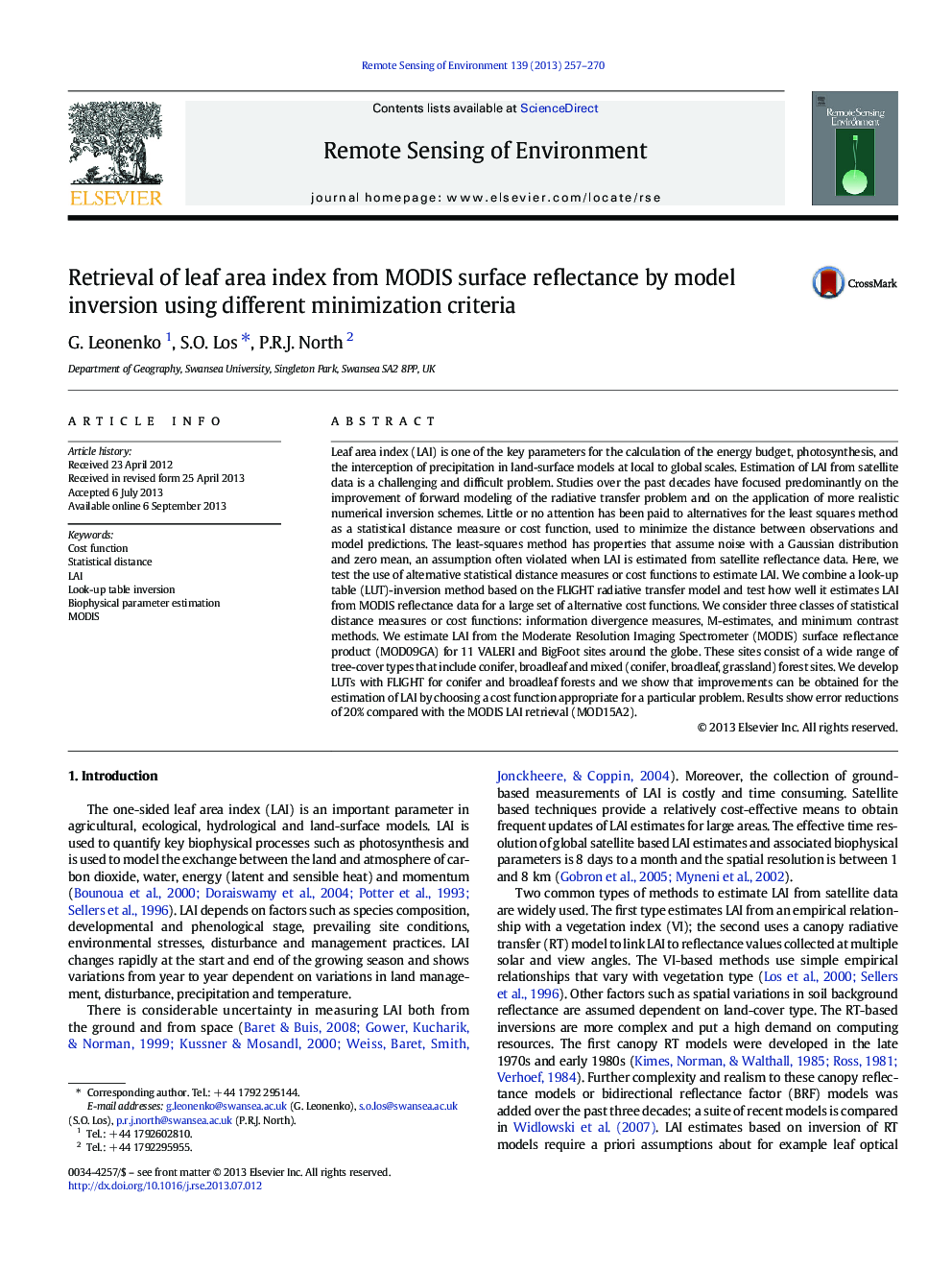| Article ID | Journal | Published Year | Pages | File Type |
|---|---|---|---|---|
| 6347145 | Remote Sensing of Environment | 2013 | 14 Pages |
•60 + statistical distances were tested to estimate LAI from MODIS reflectances.•LAI inversions were based on LUTs generated by PROSPECT/FLIGHT.•LAI inversions improved when alternative cost functions were used.•LAI estimates improved compared to the MODIS LAI product (MOD15A2).
Leaf area index (LAI) is one of the key parameters for the calculation of the energy budget, photosynthesis, and the interception of precipitation in land-surface models at local to global scales. Estimation of LAI from satellite data is a challenging and difficult problem. Studies over the past decades have focused predominantly on the improvement of forward modeling of the radiative transfer problem and on the application of more realistic numerical inversion schemes. Little or no attention has been paid to alternatives for the least squares method as a statistical distance measure or cost function, used to minimize the distance between observations and model predictions. The least-squares method has properties that assume noise with a Gaussian distribution and zero mean, an assumption often violated when LAI is estimated from satellite reflectance data. Here, we test the use of alternative statistical distance measures or cost functions to estimate LAI. We combine a look-up table (LUT)-inversion method based on the FLIGHT radiative transfer model and test how well it estimates LAI from MODIS reflectance data for a large set of alternative cost functions. We consider three classes of statistical distance measures or cost functions: information divergence measures, M-estimates, and minimum contrast methods. We estimate LAI from the Moderate Resolution Imaging Spectrometer (MODIS) surface reflectance product (MOD09GA) for 11 VALERI and BigFoot sites around the globe. These sites consist of a wide range of tree-cover types that include conifer, broadleaf and mixed (conifer, broadleaf, grassland) forest sites. We develop LUTs with FLIGHT for conifer and broadleaf forests and we show that improvements can be obtained for the estimation of LAI by choosing a cost function appropriate for a particular problem. Results show error reductions of 20% compared with the MODIS LAI retrieval (MOD15A2).
